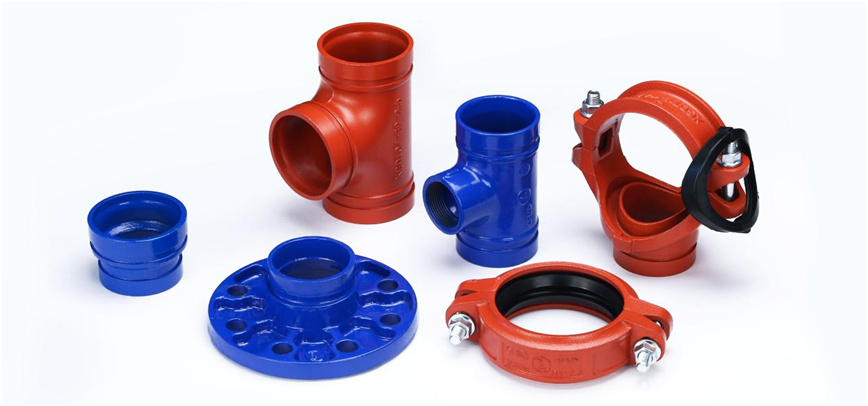That being said, fire protection pipe fittings typically have several features to ensure their effectiveness in preventing and controlling the spread of fire.
Material: Fire protection pipe fittings are typically made of materials that are resistant to fire, such as steel or iron. They may also be coated with a fire-resistant material to provide additional protection.
Size and shape: Fire protection pipe fittings are designed to fit the specific size and shape of the pipes they are intended to connect. They may be available in a range of sizes and shapes to accommodate different pipe configurations.
Threaded connections: Fire protection pipe fittings typically have threaded connections that allow them to be easily installed and removed from pipes. The threads provide a secure and tight connection that can withstand pressure and prevent leaks.
Pressure rating: Fire protection pipe fittings are designed to withstand high pressure and are typically rated for a specific pressure range. It is important to choose fittings with a pressure rating that is appropriate for the specific application.
Compliance with industry standards: Fire protection pipe fittings should comply with industry standards and regulations to ensure their effectiveness in preventing and controlling the spread of fire. For example, in the United States, fire protection pipe fittings must meet the standards set by the National Fire Protection Association (NFPA) and the American Society of Mechanical Engineers (ASME).
Overall, fire protection pipe fittings should be designed and manufactured with safety and reliability in mind. It is important to choose high-quality fittings that meet industry standards and regulations to ensure effective protection against fire hazards.
Using substandard fire protection pipe fittings can have serious consequences in the event of a fire.
Increased risk of fire spread: Substandard fire protection pipe fittings may not be able to effectively contain or control the spread of fire, which can result in the fire spreading more quickly and causing more damage.
Reduced effectiveness of fire protection systems: Fire protection systems, such as sprinkler systems, rely on properly functioning pipe fittings to deliver water to the affected area. Substandard pipe fittings may not be able to effectively deliver water, which can reduce the effectiveness of the fire protection system.
Increased risk of injury or loss of life: If a fire protection system fails due to substandard pipe fittings, there is an increased risk of injury or loss of life for building occupants and firefighters.
Code violations and legal consequences: The use of substandard fire protection pipe fittings can result in code violations and legal consequences for building owners and contractors. In some cases, the use of substandard pipe fittings may result in fines, penalties, or legal liability in the event of a fire.
Overall, the consequences of using substandard fire protection pipe fittings can be severe. It is important to use high-quality fittings that comply with industry standards and regulations to ensure effective protection against fire hazards.

Previous: GFS Agricultural Water Storage Tanks: Enhancing Efficiency and Sustainability in Farming
Next: Discovering The Various Types of Aluminum Honeycomb Sandwich Panel
Copyright:@2020-2021
Comments Please sign in or sign up to post.
0
0 of 500 characters used